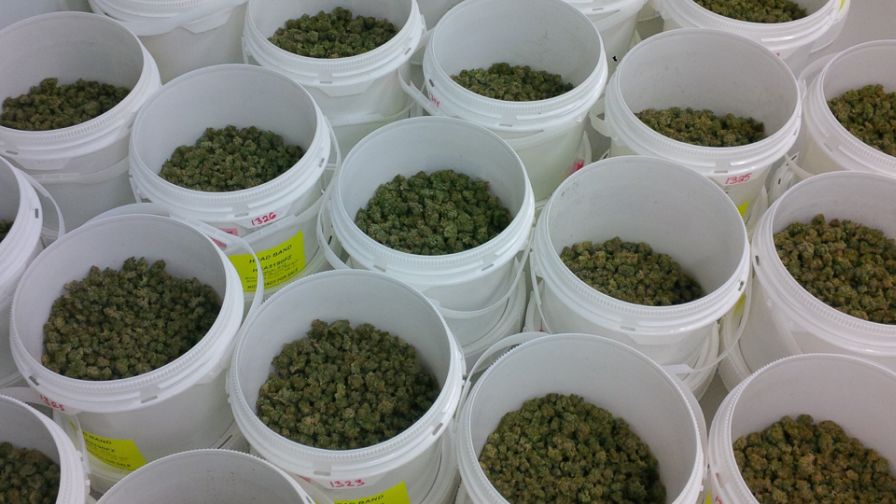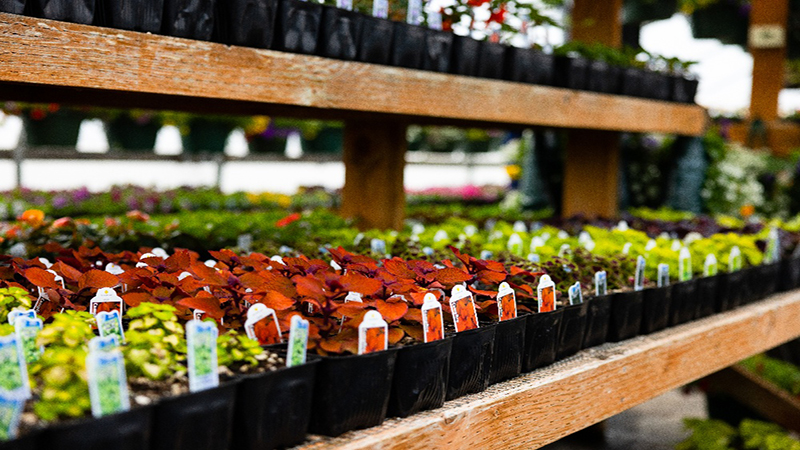5 Steps to Cannabis Curing Success

Glass jars, plastic buckets, and metal containers are the most common cannabis curing containers, but paper bags and cardboard boxes work well, too, as long as the environmental conditions are ideal. Photo: Ryan Douglas
For many growers, drying their cannabis crop signals the end of the production cycle. But some cultivators like to sweeten the pot by adding one last step to the post-harvest process: curing.
Curing is a process that evenly distributes moisture throughout the flower and accentuates its unique aromas and characteristics. Like tobacco, curing cannabis ensures the end consumer an enjoyable and smooth smoking experience.
Growers familiar with the process agree it is as much an art as a science. But not all growers cure their product due to the time, space, and attention required, whereas others don’t see the value. Business owners want to sell their products as soon as possible, and watching inventory sit for several months can be anxiety-inducing.
Furthermore, if the curing process isn’t done correctly, growers risk ruining the entire batch.
If you’re new to the curing game, follow these five steps for perfecting your precious harvest:
Step 1: Dry your crop slowly but sufficiently. Remember the 60s (60 to 65°Fahrenheit and 60 to 65% relative humidity). Curing won’t do much to fix cannabis flowers whose terpenes have been lost due to high temperatures or overly dry conditions. Most growers use the snap test to determine when the drying process is complete; if pressure is applied to flower stems, they snap instead of bend.
Step 2: Trim your harvest. Curing works for both hand-trimmed and machine-trimmed flowers. Choose one, and trim.
Step 3: Select a curing container. Glass jars, plastic buckets, and metal containers are most common, but paper bags and cardboard boxes work well, too, as long as the environmental conditions are ideal. Again, stick to the low 60s.
Step 4: Commence the cure. This process can last anywhere from two weeks to six months. Die-hard cannasseurs believe the longer, the better. Set a schedule for periodically removing the lids and “burping” the containers to allow moisture to escape. If you’re curing for a few months, try this:
- Weeks 1-2: Burp twice during each 24 hours
- Weeks 3-4: Burp once every 48 hours
- Weeks 5-8: No burps
Step 5: Enjoy! Properly cured cannabis should smell earthy and rich and can express complex aromas that weren’t evident in the freshly harvested flower. Cured cannabis should be spongy to the touch when squeezed, with a moisture content ranging from 9% to 13%
If your cured product smells musty or has overtones of ammonia, it was not sufficiently dried before curing or was not burped on a set schedule. Also, an overly humid environment can rehydrate cannabis flowers each time the lids are removed, compromising the curing process.
If finished cured cannabis doesn’t smell like anything, the culprit was likely the drying process or the cultivar’s genetics. Curing won’t bring back terpenes lost to a rapid dry, and it won’t fix mediocre genetics. The process accentuates qualities inherent in the flower, but it won’t impart amazing characteristics to lackluster weed.
Remove the Guesswork with Automation
Given the subjective nature of curing cannabis and the risks inherent in doing it incorrectly, many growers are turning to automated solutions to eliminate the guesswork. Grow Controlled, LLC and Cannatrol are two leading companies in the automated curing space.
Grow Controlled offers the Cūrpod system, a hermetically-sealed unit that holds up to 20 pounds of product and utilizes built-in oxygen, carbon dioxide, temperature, and relative humidity sensors to ensure the perfect curing environment. Their technology promises to cure and preserve cannabis for up to 12 months.
Cannatrol offers units for both home and commercial growers that handle the entire process, from drying and curing to storage. Its patented Vaportrol Technology helps growers safely maximize the amount of moisture in the finished flower, thus increasing weight and, ultimately, sales.
How to Decide
If you’re unfamiliar with curing, or your company is on the fence about its value, trial the process on a small scale first.
Running R&D experiments with the harvest from an entire grow room is asking for trouble. Instead, separate a few pounds from a larger harvest and practice curing a few different ways, in glass, plastic, and even metal containers. Try curing product for two weeks, four weeks, and eight weeks. Find a balance between quality and cure time.
Compare the aroma of each to that of the same cannabis variety that was not cured. If feasible, run lab tests to see if there is a difference in cannabinoid or terpene content.
Take meticulous notes so that the process can be safely replicated on a larger scale. If the first trial isn’t satisfactory, records will be paramount in pinpointing and fixing the problem for the next run.
Perhaps the best way to determine if you have nailed the curing process is to borrow the nose of a cannabis aficionado. If they confirm that the quality and bouquet of your product have improved through the curing process … congratulations! You’ve conquered the cure.









